#ink’s notes
Explore tagged Tumblr posts
Note

A flower! For you :)
*gasp* :O
thank you!! i love it 🥺

have one too, friend <3
12 notes
·
View notes
Text
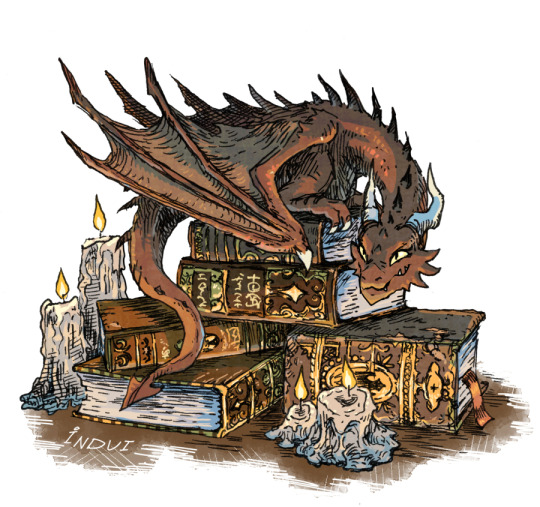
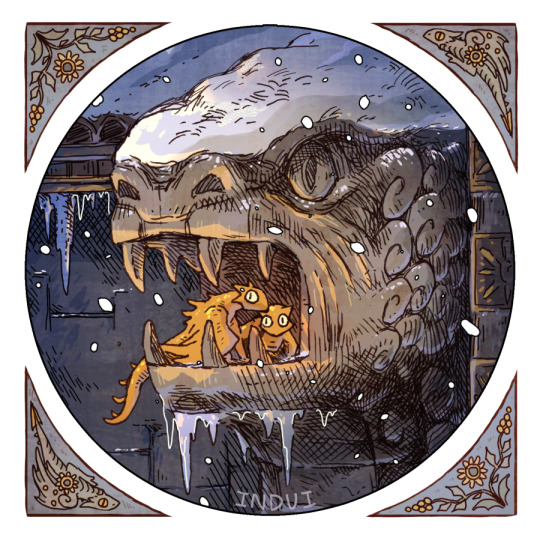
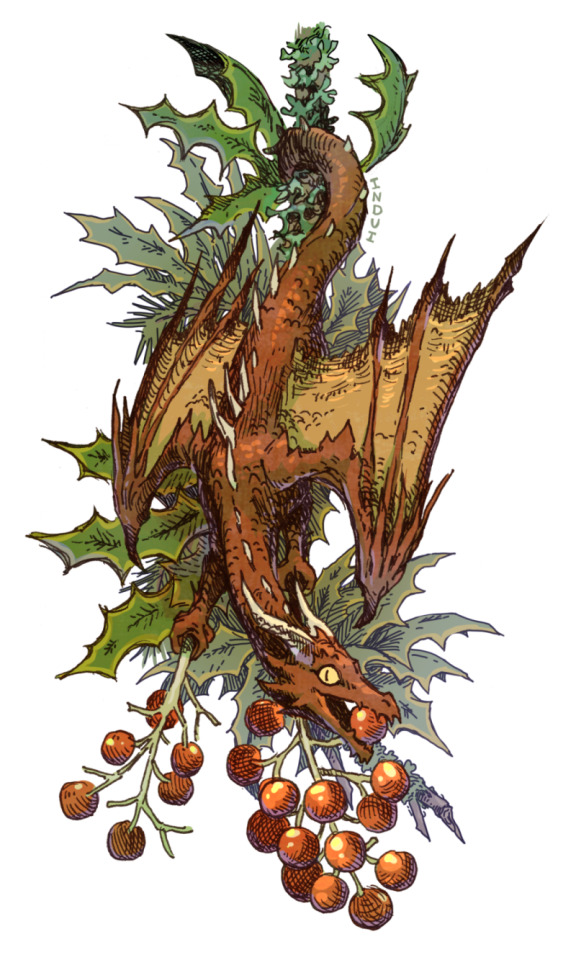
Now the ash dances with the snow....
Lil winter dragon stickers ♡
#PLS NOTE!!! I'll be out of the country for several months soon - I'll be closing the shop in February-ish due to that#so get em before then if you'd like some :DD#thank you for all the orders already-- im so happy people have been enjoying the ittybitty seasonal dragons....#i want to do spring theme too but... i might still be overseas by the time spring ends >.>#oh well... maybe i just make em very belated then? we'll see#dragons#dragon art#winter#fantasy art#fantasy illustration#dragon#fantasy creatures#inks#artists on tumblr#art#holly berries#books#fantasy books#bookwyrm#stickers#shop
14K notes
·
View notes
Text
Writing Notes & References
Alchemy ⚜ Antidote to Anxiety ⚜ Attachment ⚜ Autopsy
Art: Elements ⚜ Principles ⚜ Photographs ⚜ Watercolour
Bruises ⚜ Caffeine ⚜ Color Blindness ⚜ Cruise Ships
Children ⚜ Children's Dialogue ⚜ Childhood Bilingualism
Dangerousness ⚜ Drowning ⚜ Dystopia ⚜ Dystopian World
Culture ⚜ Culture Shock ⚜ Ethnocentrism & Cultural Relativism
Emotions: Anger ⚜ Fear ⚜ Happiness ⚜ Sadness
Emotional Intelligence ⚜ Genius (Giftedness) ⚜ Quirks
Facial Expressions ⚜ Laughter & Humour ⚜ Swearing & Taboo
Fantasy Creatures ⚜ Fantasy World Building
Generations ⚜ Literary & Character Tropes
Fight Scenes ⚜ Kill Adverbs
Food: Cooking Basics ⚜ Herbs & Spices ⚜ Sauces ⚜ Wine-tasting ⚜ Aphrodisiacs ⚜ List of Aphrodisiacs ⚜ Food History ⚜ Cocktails ⚜ Literary & Hollywood Cocktails ⚜ Liqueurs
Genre: Crime ⚜ Horror ⚜ Fantasy ⚜ Speculative Biology
Hate ⚜ Love ⚜ Kinds of Love ⚜ The Physiology of Love
How to Write: Food ⚜ Colours ⚜ Drunkenness
Jargon ⚜ Logical Fallacies ⚜ Memory ⚜ Memoir
Magic: Magic System ⚜ 10 Uncommon ⚜ How to Choose
Moon: Part 1 2 ⚜ Related Words
Mystical Items & Objects ⚜ Talisman ⚜ Relics ⚜ Poison
Pain ⚜ Pain & Violence ⚜ Poison Ivy & Poison Oak
Realistic Injuries ⚜ Rejection ⚜ Structural Issues ⚜ Villains
Symbolism: Colors ⚜ Food ⚜ Numbers ⚜ Storms
Thinking ⚜ Thinking Styles ⚜ Thought Distortions
Terms of Endearment ⚜ Ways of Saying "No" ⚜ Yoga
Compilations: Plot ⚜ Character ⚜ Worldbuilding ⚜ For Poets ⚜ Tips & Advice
all posts are queued. will update this every few weeks/months. send questions or requests here ⚜ Writing Resources PDFs
#writing reference#writing inspiration#writeblr#dark academia#spilled ink#literature#writers on tumblr#poets on tumblr#light academia#lit#poetry#writing notes#fiction#novel#booklr#creative writing#writing prompts#writing ideas#worldbuilding#character design#plot#writing resources
14K notes
·
View notes
Text
Writing Notes: Stages of Decomposition

The decomposition process occurs in several stages following death:
Pallor mortis
Algor mortis
Rigor mortis
Cadaveric spasm
Lividity
Putrefaction
Decomposition
Skeletonization
PALLOR MORTIS
The first stage of death.
Occurs once blood stops circulating in the body.
The cessation of an oxygenated blood flow to the capillaries beneath the skin causes the deceased to pale in appearance.
In non-Caucasians, the pallor may appear to develop an unusual hue; the skin will lose any natural lustre and appears more waxen.
Occurs quite quickly, within about 10 minutes after death.
ALGOR MORTIS
The cooling of the body after death.
The cooling process will be influenced by many factors, including the deceased’s clothing, or whether they are covered with bed linen such as blankets or duvets.
The body will typically cool to the ambient room temperature, but this alters if there is heating in the room or if there is a constant draught cooling the body.
RIGOR MORTIS
Can occur between 2 and 6 hours after death.
Factors including temperature can greatly affect this.
Caused by the muscles partially contracting, and the lack of aerobic respiration means that the muscles cannot relax from the contraction, leaving them tense, subsequently resulting in the stiffening we associate with rigor mortis.
This stage typically begins in the head, starting with the eyes, mouth, jaw and neck, and progresses right through the body.
The process is concluded approximately 12 hours after death (although, again, certain variables may occur) and lasts between 24 and 72 hours depending on circumstances.
Contrary to popular belief, rigor mortis is not a permanent state and is in fact reversed, with the muscles relaxing in the same order in which they initially stiffened.
The reversing process also takes approximately 12 hours, when the body returns to its un-contracted state.
It is possible to ‘break’ rigor mortis by manipulating and flexing the limbs. This is usually done by undertakers, pathologists or crime scene investigators who are attempting to examine or move a body – or by a murderer trying to hide their victim in the closet or the boot of a car.
CADAVERIC SPASM
A phenomenon that can be misinterpreted as rigor mortis.
The instantaneous stiffening of the body (most commonly the hands) following a traumatic death.
Unlike rigor mortis, the stiffening of the affected limb is permanent and is not reversed, causing the deceased to maintain the rigidity until such time as putrefaction causes breakdown of the particular muscle group.
Examples:
The deceased following an air crash were later discovered still clutching their seatbelts or arm rests in a final, desperate act of survival.
In a drowning case, the victim was discovered with grass from the riverbank still grasped in their hand.
Perhaps the most famous case of cadaveric spasm involves the rock band Nirvana’s lead singer, Kurt Cobain. Cobain reportedly committed suicide in April 1994. His body was discovered a few days after his death with a shotgun wound to the head, and tests revealed he had large traces of heroin in his system. He was reportedly discovered still clutching the gun in his left hand, due to cadaveric spasm. However, a great deal of controversy surrounds the veracity of this latter assumption, and indeed the cause of his death, with many people insisting and attempting to prove that he died as the result of foul play rather than suicide.
LIVIDITY
Also known as livor mortis, hypostasis, or suggillation.
Once blood can no longer circulate, it will gravitate towards the lowest point of the body.
Example: A supine body will display pinkish/purple patches of discoloration where the blood has settled in the back and along the thighs.
Occurs about 30 minutes after death, but will not necessarily be noticeable until at least 2 hours afterwards as the pooling process intensifies and becomes visible, finally peaking up to between 8 and 12 hours later.
Once it is complete, the lividity process cannot be reversed.
Therefore a body discovered lying on its side, but with staining evident in the back and shoulders, must have been moved at some point from what would have been a supine position at the time of death.
It is worth noting that if the body has had contact with the floor, a wall or other solid surface, lividity would not occur at the points of contact as the pressure would not allow the blood to seep through the capillaries and pool. The specific area of pressure will be the same colour as the rest of the body and a pattern of contact may well be evident.
PUTREFACTION
Derives from the Latin putrefacere, meaning ‘to make rotten’.
The body becomes rotten through the process known as autolysis, which is the liquefaction of bodily tissue and organs and the breakdown of proteins within the body due to the increased presence of bacteria.
The first visible sign is the discoloration of the skin in the area of the abdomen.
Bacteria released from the intestine cause the body to become bloated with a mixture of gases; over time these will leak out, and the smell will intensify to unbearable proportions.
Typically, this will attract flies that will lay eggs, which develop into maggots.
Bloating is most evident in the stomach area, genitals and face, which can become unrecognizable as the tongue and eyes are forced to protrude due to the pressure of the build-up of gases in the body.
At this stage, the body will also begin to lose hair.
The organs typically decompose in a particular order: starting with the stomach, followed by the intestines, heart, liver, brain, lungs, kidney, bladder and uterus/prostate.
Once all the gases have escaped the skin begins to turn black: this stage is called ‘black putrefaction’.
As with all the other stages of death so far, the rate of putrefaction depends on temperature and location. A body exposed to the air above ground will decompose more quickly than a body left in water or buried below ground.
During putrefaction, blistering of the skin and fermentation can also occur:
Fermentation - a type of mould that will grow on the surface of the body. This mould appears white, and is slimy or furry in texture. It also releases a very strong, unpleasant, cheesy smell.
As the putrefaction process comes to an end, fly and maggot activity will become less, which leads to the next stage.
DECOMPOSITION
The body is an organic substance comprising organisms that can be broken down by chemical decomposition.
If the body is outside, any remains that have not been scavenged or consumed by maggots will liquefy and seep into the surrounding soil.
Thus when the body decomposes it is effectively recycled and returned to nature.
SKELETONIZATION
The final stage of death is known as ‘dry decay’, when the cadaver has all but dried out: the soft tissue has all gone and only the skeleton remains.
If the cadaver is outside, not only is it exposed to the elements but it also becomes food for scavengers such as rats, crows or foxes.
As the remains are scavenged, the body parts become dispersed so it is not unusual to find skeletal remains some distance from where the body lay at the point of death.
The way in which skeletal remains are scattered in such cases is of interest to archaeologists, and is referred to as taphonomy.
Where a body has lain undiscovered at home for a period of time it has also been known for family pets, typically dogs, to feed on the body. The natural instinct of a pet is to attempt to arouse the deceased by licking them, but once it gets hungry, its survival instinct will take over and it will consider the body as little more than carrion: it will act with the same natural instinct as a scavenger in the wild, which will feed on any corpse, be it animal or human, if it is starving.
Obviously the number of pets, the body mass of the deceased and the time lapse before the body is discovered will influence to what extent it has been devoured.
For further research on the stages of decomposition and the factors that affect it, look up body farms. These are medical facilities where bodies are donated for research purposes so scientists can specifically observe the decomposition process. However, be aware that some of the images are quite graphic.
Source ⚜ More: References ⚜ Autopsy ⚜ Pain & Violence ⚜ Injuries Bereavement ⚜ Death & Sacrifice ⚜ Cheating Death ⚜ Death Conceptions
Writing Resources PDFs
#writing reference#decomposition#writeblr#spilled ink#dark academia#writing notes#fiction#creative writing#novel#light academia#literature#writers on tumblr#léon cogniet#poets on tumblr#writing prompt#poetry#writing prompts#writing tips#crime fiction#writing resources
4K notes
·
View notes
Text
I wonder if anyone ever fantasizes about having a life with me.
#random notes#random thoughts#randomnotebookthoughts#female writers#writers and poets#writers on tumblr#thinking out loud#obsessive daydreaming#love#love poetry#spilled ink#words#quotes#text post#feelings#poets corner#poets on tumblr#original writing#love poem#relationship
6K notes
·
View notes
Text






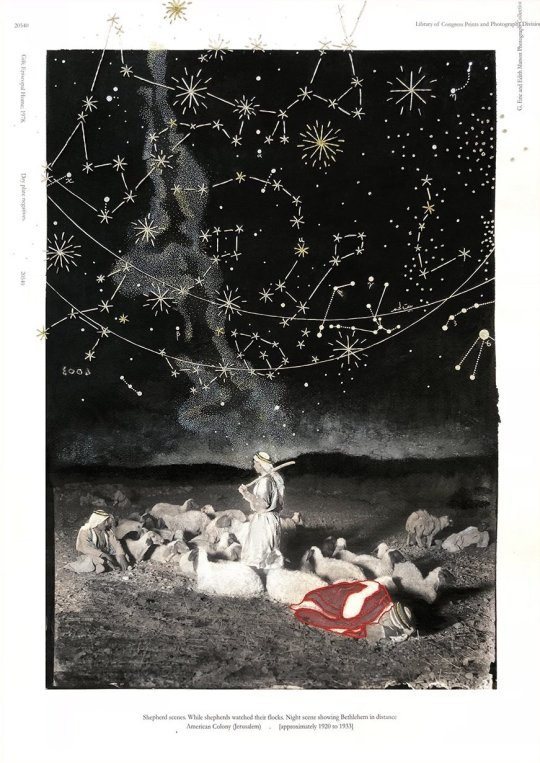



A Land Without People series by Palestinian artist Dana Barqawi, 2018
#art#dana barqawi#contemporary art#palestine#palestinian art#middle eastern art#artists of color#women artists#female artists#free palestine#2010s#21st century#mixed media#embroidery#acrylic#ink#palestinian#jamie's favorites#100 notes#250 notes#500 notes#750 notes#1000 notes#2500 notes#5000 notes
8K notes
·
View notes
Text

scandalous
#my art#art tag#jena#this is actually my second attempt cause i colored it once and it ended up being so whatever...#however. jena deserves her romance novel cover moment so i tried again#also used some new brushes which was fun#like i want back and re inked the whole sketch lol#anything for jena.....#side note : i find orlesian ladies hard to design cause their fashion is supposed to be so elaborate#but i love simple fashion... it's hard for me. cries
1K notes
·
View notes
Text

Kiersten White, The Chaos of Stars
#soul connection#writers on tumblr#writing#poetic#love#poetry#life#literature#brown eyes#love quotes#dark academia#dark aesthetic#light academia#longing#agony#falling in love#lit#spilled ink#spilled thoughts#spilled words#spilled poetry#spilled writing#kawaii#web weaving#web writing#poem#sad poetry#vintage#notes#i love her
2K notes
·
View notes
Text











[ID: a series of drawings featuring Riz Gukgak from D20 Fantasy High. In the first, Pok holds Riz's shoulders in heaven as says, smiling, when you work until the dead of night, your friends know you do it because you love them. In the second, Riz is having a group hug with his party and the text reads, but is it really love that drives you, Riz Gukgak... In the next, a desperate, pleading Riz clutches the shoulder of an indifferent, faceless person and the text continues, ...or is it fear? In the fourth, Riz is younger and digging through crystals with bleeding hands; the text reads, what use are you when you can no longer dig. In the fifth, Kalina, shrouded in darkness with only her eyes glowing, reaches towards the camera with a smile; the text reads, when you're too scared to think. Sixth, Riz is filling out Fig and Kristen's papers under the light of a lamp, serious and tired; the text reads, when you're too tired to work. Seventh, Riz is lying in bed, eyes hidden behind hair, hand on his father's picture; the text reads, too sad to keep the mood up. Eighth, Baron stares into the camera; the text reads, too lonely, too insecure, too weird. Ninth, Baron is holding a defeated Riz by the throat; the text reads, to keep moving? Tenth, Riz is standing in the distance, holding his briefcase, and behind him is a football/soccer ball; the text reads, what use is a ball that can no longer roll? The last drawing just says none in brackets on a dark background. End ID]
#riz gukgak#fantasy high#d20 fantasy high#fhsy#fhjy#fantasy high sophomore year#super funny story abt how/why i finished this after being out of the fandom for a While now#sb commented on my sklonpok fic prompting me to reread it#and then when i next sat down to drawn smt i rly got the desire to finish this#one inking and colouring later (and some hours) here you go#you can tell which drawing i did from scratch now rather than just inked jsdjskjdk when i draw too much like i did for fh u can see it#number three though? super happy w that one#so happy i didn't even ink the face i just left the original sketch#don't usually colour things but i got the itch here and decided to practice my simple colour palettes a bit#can't get better if u don't experiment#anyway enjoy! riz angst is always on the menu in this house#the notes on the first drawing said to check the episode transcript to see exactly what i said but i didnt feel like it sjkdjskjd#so i left it as i remembered it. but pok enjoyers will know which quote i was getting at
638 notes
·
View notes
Text
i wish i could have multiple roommates in stardew valley. i just want to marry my emo man (sebastian) and also have my little sewer monster friend (krobus) live with us. is that too much to ask? :(
10 notes
·
View notes
Text
redraws of the old comic… [shudders]


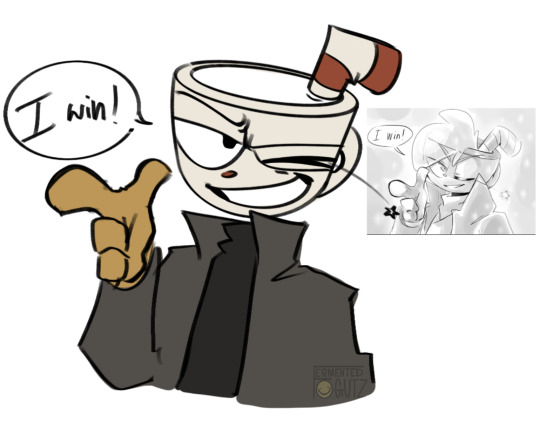
school is almost out, bear with me u guys
#author’s notes#thequestfortheinkmachinecomics#bendy and the ink machine#mugman#cuphead#babtqftim#felix the cat#tqftimc
1K notes
·
View notes
Quote
Be careful what you tell people. A friend today could be an enemy tomorrow.
Quotes ‘nd Notes
#Quotes ‘nd Notes#motivation#quotes#poetry#literature#relationship quotes#writing#original#words#love#relationship#thoughts#lit#prose#spilled ink#inspiring quotes#life quotes#quoteoftheday#love quotes#poem#aesthetic
545 notes
·
View notes
Text
Writing Notes: Children's Dialogue
Language is extremely complex, yet children already know most of the grammar of their native language(s) before they are 5 years old.
BABBLING
Babbling begins at about 6 months and is considered the earliest stage of language acquisition
By 1 year babbles are composed only of the phonemes used in the language(s) they hear
Deaf babies babble with their hands like hearing babies babble using sounds
FIRST WORDS
After the age of one, children figure out that sounds are related to meanings and start to produce their first words
Usually children go through a holophrastic stage, where their one-word utterances may convey more meaning
Example: "Up" is used to indicate something in the sky or to mean “pick me up”
Most common first words (among the first 10 words uttered in many languages): “mommy,” “daddy,” “woof woof,” “no,” “bye,” “hi,” “yes,” “vroom,” “ball” and “banana”
WORD MEANINGS
When learning words, children often overextend a word’s meaning
Example: Using the word dog to refer to any furry, four-legged animal (overextensions tend to be based on shape, size, or texture, but never color)
They may also underextend a word’s meaning
Example: Using the word dog to refer only to the family pet, as if dog were a proper noun
The Whole Object Principle: When a child learns a new word, (s)he is likely to interpret the word to refer to a whole object rather than one of its parts
SYNTAX
At about two years of age, children start to put words together to form two-word utterances
The intonation contour extends over the two words as a unit, and the two-word utterances can convey a range of meanings:
Example: "mommy sock" = subject + object or possessive
NOTE: Chronological age is NOT a good measure of linguistic development due to individual differences, so instead linguists use the child’s mean length of utterance (MLU) to measure development
The telegraphic stage describes a phase when children tend to omit function morphemes such as articles, subject pronouns, auxiliaries, and verbal inflection
Examples: "He play little tune" or "Andrew want that"
Between 2;6 and 3;6 a language explosion occurs and children undergo rapid development
By the age of 3, most children consistently use function morphemes and can produce complex syntactic structures:
Examples: "He was stuck and I got him out" / "It’s too early for us to eat"
After 3;6 children can produce wh-questions, and relative pronouns
Sometime after 4;0 children have acquired most of the adult syntactic competence
PRAGMATICS
Deixis: Children often have problems with the shifting reference of pronouns
Children may refer to themselves as "you"
Problems with the context-dependent nature of deictic words: Children often assume the hearer knows who s/he is talking about
AUXILIARIES
In the telegraphic stage, children often omit auxiliaries from their speech but can form questions (with rising intonation) and negative sentences
Examples: "I ride train?" / "I not like this book"
As children acquire auxiliaries in questions and negative sentences, they generally use them correctly
SIGNED LANGUAGES
Deaf babies acquire sign language in the same way that hearing babies acquire spoken language: babbling, holophrastic stage, telegraphic stage
When deaf babies are not exposed to sign language, they will create their own signs, complete with systematic rules
IMITATION, REINFORCEMENT, ANALOGY
Children do imitate the speech heard around them to a certain extent, but language acquisition goes beyond imitation
Children produce utterances that they never hear from adults around them, such as "holded" or "tooths"
Children cannot imitate adults fully while acquiring grammar
Example:
Adult: "Where can I put them?" Child: "Where I can put them?"
Children who develop the ability to speak later in their childhood can understand the language spoken around them even if they cannot imitate it
NOTE: Children May Resist Correction
Example: Cazden (1972) (observation attributed to Jean Berko Gleason) – My teacher holded the baby rabbits and we patted them. – Did you say your teacher held the baby rabbits? – Yes. – What did you say she did? – She holded the baby rabbits and we patted them. – Did you say she held them tightly? – No, she holded them loosely.
Another theory asserts that children hear a sentence and then use it as a model to form other sentences by analogy
But while analogy may work in some situations, certainly not in all situations:
– I painted a red barn. – I painted a barn red. – I saw a red barn. – I saw a barn red.
Children never make mistakes of this kind based on analogy which shows that they understand structure dependency at a very young age
BIRTH ORDER
Children’s birth order may affect their speech.
Firstborns often speak earlier than later-born children, most likely because they get more one-on-one attention from parents.
They favor different words than their siblings.
Whereas firstborns gabble on about animals and favorite colors, the rest of the pack cut to the chase with “brother,” “sister,” “hate” and such treats as “candy,” “popsicles” and “donuts.”
The social dynamics of siblings, it would appear, prime their vocabularies for a reality different than the firstborns’ idyllic world of sheep, owls, the green of the earth and the blue of the sky.
MOTHER'S LEVEL OF EDUCATION
Children may adopt vocabulary quite differently depending on their mother’s level of education.
In American English, among the words disproportionately favored by the children of mothers who have not completed secondary education are: “so,” “walker,” “gum,” “candy,” “each,” “could,” “wish,” “but,” “penny” and “be” (ordered starting with the highest frequency).
The words favored by the children of mothers in the “college and above” category are: “sheep,” “giraffe,” “cockadoodledoo,” “quack quack,” the babysitter’s name, “gentle,” “owl,” “zebra,” “play dough” and “mittens.”
BOYS / GIRLS
One area of remarkable consistency across language groups is the degree to which the language of children is gendered.
The words more likely to be used by American girls than by boys are: “dress,” “vagina,” “tights,” “doll,” “necklace,” “pretty,” “underpants,” “purse,” “girl” and “sweater.”
Whereas those favored by boys are “penis,” “vroom,” “tractor,” “truck,” “hammer,” “bat,” “dump,” “firetruck,” “police” and “motorcycle.”
Tips for Writing Children's Dialogue (compiled from various sources cited below):
Milestones - The dialogue you write should be consistent with the child's developmental milestones for their age. Of course, other factors should be considered such as if the child has any speech or intellectual difficulties. Also note that developmental milestones are not set in stone and each child is unique in their own way.
Too "Cutesy" - If your child characters are going to be cute, they must be cute naturally through the force of their personality, not because the entire purpose of their existence is to be adorable.
Too Wise - It’s true kids have the benefit of seeing some situations a little more objectively than adults. But when they start calmly and unwittingly spouting all the answers, the results often seem more clichéd and convenient than impressive or ironic.
Unintelligent - Don’t confuse a child’s lack of experience with lack of intelligence.
Baby Talk - Don’t make a habit of letting them misuse words. Children are more intelligent than most people think.
Unique Individuals - Adults often tend to lump all children into a single category: cute, small, loud, and occasionally annoying. Look beyond the stereotype.
Personal Goals - The single ingredient that transforms someone from a static character to a dynamic character is a goal. It can be easy to forget kids also have goals. Kids are arguably even more defined by their goals than are adults. Kids want something every waking minute. Their entire existence is wrapped up in wanting something and figuring out how to get it.
Don't Forget your Character IS a Child - Most of the pitfalls in how to write child characters have to do with making them too simplistic and childish. But don’t fall into the opposite trap either: don’t create child characters who are essentially adults in little bodies.
Your Personal Observation - To write dialogue that truly sounds like it could come from a child, start by being an attentive listener. Spend time around children and observe how they interact with their peers and adults. You can also study other pieces of media that show/write about children's behaviour (e.g., documentaries, films, TV shows, even other written works like novels and scripts).
Context - The context in which children speak is crucial to creating realistic dialogue. Consider their environment, who they're speaking to, and what's happening around them. Dialogue can change drastically depending on whether a child is talking to a friend, a parent, or a teacher. Additionally, children's language can be influenced by their cultural background, family dynamics, and personal experiences. Make sure the context informs the dialogue, lending credibility to your characters' voices.
Sources and other related articles: 1 2 3 4 5 6 7 8 9 10
Writing Notes: On Children ⚜ Childhood Bilingualism More: Writing Notes & References ⚜ Writing Resources PDFs
#writing prompt#writeblr#writers on tumblr#spilled ink#poets on tumblr#writing notes#children#writing tips#literature#writing advice#writing reference#studyblr#langblr#linguistics#dark academia#dialogue#writing resources
4K notes
·
View notes
Text
I am truly a giggler. A laugher. A chuckler. Just somewhere in the background snickering.
#random notes#random thoughts#randomnotebookthoughts#female writers#writers and poets#writers on tumblr#thinking out loud#obsessive daydreaming#spilled ink#words#quotes#text post#feelings#poets on tumblr#poets corner#my own writing#my own thoughts#original writing#my writing#writers#writeblr
6K notes
·
View notes
Text

pokeyman :(
kinda sorta a redraw of this epic thing (below cut)
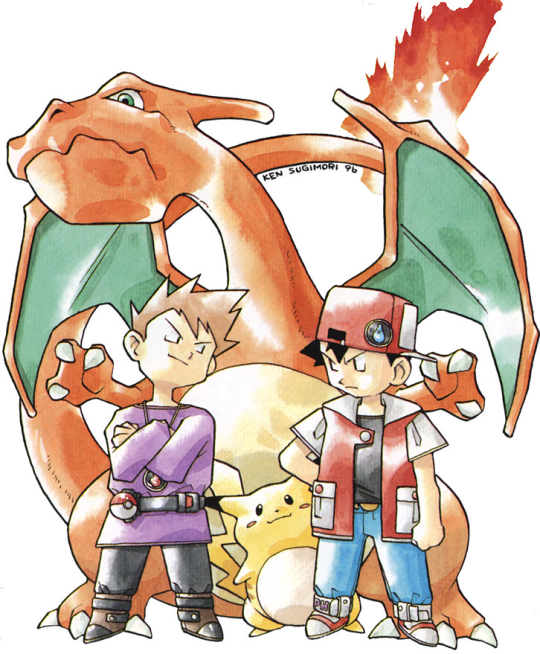
#i had to use white out bc my white acrylic marker ran out of ink :(#pokemon#pkmn#trainer red#blue oak#namelessshipping#originalshipping#reguri#fan art#becki draws stuff n stuff#rendered#side note. i know why theyre called namelessshipping. still a REALLY funny official ship name. I vote we call them purple.
582 notes
·
View notes
Text

goofy goober!! warm up and a clean sketch. i might color it? dunno yet, but i do like it a lot. (probably will forget)
#chasm art#ink sans#utmv#i didn't expect the killer sans doodle to do numbers :sob:#like 50 notes???? wth#thanks gang for the support haha#i'll try to draw more :]
469 notes
·
View notes